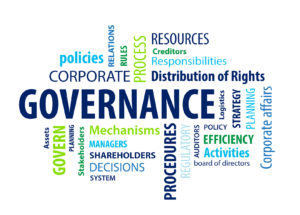
Supplier Governance is a concept of managing outsourcing contracts once they are signed, so that outsourcing goals are effectively translated into predictable outcomes. With its primary objective of providing insights into outsourcing contracts, Supplier Governance helps enterprises minimize value leakage, including both hard and soft dollars. To give you an analogy, when you purchase a new car, you don’t expect to get top-notch mileage and overall performance automatically. You need to know the checklist of good practices for your vehicle, which can help you extract maximum performance out of it. So, it is not just about knowing how to drive a car, but it is about the insights that help you get the best value out of it.
Let’s look at the key Supplier Governance Checklist Items (SGCI) that can help enterprises address value leakage effectively.
Maintaining the right tire pressure
When the tire pressure is low, it creates high friction between the tires and road, resulting in high fuel consumption. When the tires are overinflated, the road grip gets impacted. So, we refer to the user manual for the car to know the right pressure.
Similarly, we should ensure that clients and vendors have easy access to contracts via Document Library*SGCI. And they adhere to Service Levels*SGCI, Deliverables, and Obligations (DnO) *SGCI as per the contract to minimize friction and maximize mileage.
Driving smoothly for a comfortable journey
Fast acceleration and hard braking in a car might thrill you, but it will reduce the fuel efficiency and increase wear and tear. Likewise, an ad-hoc governance requires additional effort, costs more and is less efficient. Ensuring proper Financial Analysis and Planning*SGCI, Spend Pool Management*SGCI, Regulatory Compliance*SGCI and Policy Compliance*SGCI will lead to a smooth operation and delivery from the vendor.
Optimizing driving plans
One consolidated drive to buy groceries in a day is better for saving fuel and time than multiple trips. In other words, reaching out to a vendor for each and every change request is not advisable. A Contract Change Request*SGCI burdens both sides and results in value leakage. Therefore, a consolidated request should be made in the right sequence.
Leaving no window (room) open for inefficiency
Driving with open windows (even partly) at high speeds creates drag, which brings down the fuel efficiency. Similarly, timely tracking and managing Action and Issues*SGCI raised from governance meetings is required to ensure the effectiveness of these meeting. Contract Interpretations*SGCI should be done to ensure delivery is not dragged because of the confusion on what needs to be done.
Braking and accelerating progressively
The habit of braking hard and then accelerating fast brings down the fuel efficiency of a car dramatically. It is better to slow down steadily when you see an oncoming obstruction or a traffic signal. If a vendor receives a poor Customer Satisfaction Survey (CSAT) *SGCI, do not go hard on the score. Instead, slow down and take a step back to conduct a Vendor Satisfaction Survey (VSAT) *SGCI to find out why a vendor is not able to satisfy stakeholders and work with the vendor to improve performance.
Loading a car only when it is required
It is always advisable to avoid overloading the boot of a car as this ensures its stability and good fuel efficiency from the vehicle. Overloading should be kept to a minimum for unavoidable situations only. Likewise, Work Orders*SGCI should be issued at the right time and for the right duration. Also, ensure that the assigned scope is in line with existing business needs.
Idling is the Devil’s workshop
An idling car will burn more fuel without really going anywhere. The same way, you should ensure maximum utilization of available resources. Track your internal and supplier performances using Balance Score Card*SGCI and periodic Supplier Audits*SGCi, and identify areas of opportunity.
Keeping the vitals clean and in check
Driving a car with clogged filters and radiator vent can make it susceptible to breakdowns and inefficiency. Similarly, you should ensure the hygiene of all calculations related to Service Level*SGCI, Invoices*SGCI, and Performance Credits & Earnbacks*SGCI should be reported with relevant backup data. And the client should have access to it for transparency.
Choosing your route carefully
Given the heavy traffic in cities around the world today, it is always advisable to check for traffic beforehand and select the most suitable route. Likewise, ensure reviews of all transitions, project plans, and Milestones*SGCI are in light of external and internal environment before working on them.
Leaving the car to take a walk
If you just need to go few blocks away or to a place where finding parking becomes difficult, the easiest thing to do is park your car at an appropriate place and take a walk. Similarly, at times, the vendor may not be the solution to everything, and you might have to do few things yourself.
A reliable car brand name alone does not guarantee optimal performance and life. To get longevity and good mileage out of a vehicle, you have to follow the checklist of proper care and maintenance required for a car. Eventually, it is the combination of an excellent driver and the insights that helps in getting maximum value out of the car. Similarly, matured Supplier Governance practices minimize Hard and Soft Dollar leakages from outsourcing deals, ensuring a hassle-free engagement with vendors.



Hi,
I started learning supplier governance processes including contract administration, supplier performance management, contract commercials validation, supplier assessment and related governance processes.
Your blog helped me a lot to understand the concepts. Thank you